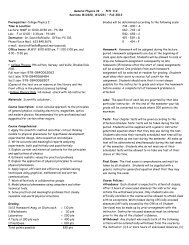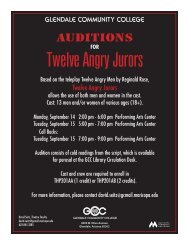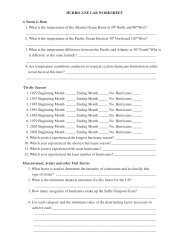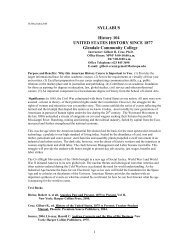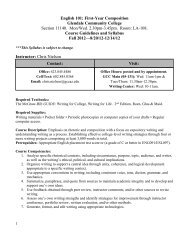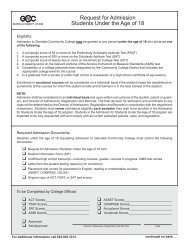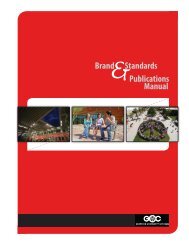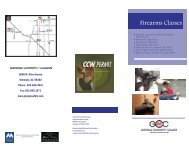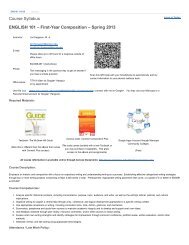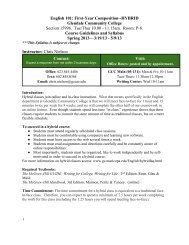GLG101: Physical Geology Lecture Outlines for Exam#3:
GLG101: Physical Geology Lecture Outlines for Exam#3:
GLG101: Physical Geology Lecture Outlines for Exam#3:
You also want an ePaper? Increase the reach of your titles
YUMPU automatically turns print PDFs into web optimized ePapers that Google loves.
G. Calderone- <strong>GLG101</strong>: <strong>Physical</strong> <strong>Geology</strong> <strong>Lecture</strong> Reviews, <strong>Exam#3</strong>, August 23, 2011 Page 9 of 20Oblique-slip faultsNote that although most faults have some oblique component, they tend to be dominantlydip- or strike- slip. So we simply classify most of them as if they were completely oneway or the other.MountainsTypes of mountains•Fold and Thrust Belts- Compressional stress-•Block Faulting & Rift Valleys- Tensional stressHorsts & Grabens•Single volcanoes or volcanic chains (island or continental arcs)- found around subductionzones•Erosional remnants- present day Appalachians <strong>for</strong>med originally as a fold and thrust beltwhen Africa collided with North America at the end of the Paleozoic. Eroded to flat.Exhumed by later uplift and differential erosion of weaker rock units.Anatomy of an orogenic belt- The Plate Tectonic or Wilson CyclePassive and active continental marginsRifting and Sea-Floor spreading to produce Passive marginDeposition of sedimentsChange in tectonic environment to produce subductionBeginning of andesitic volcanismCompressional de<strong>for</strong>mationFoldingFaultingMetamorphismContinental Collision and return to passive margin tectonicsMicroplate tectonics- Suspect TerranesSupplemental Materials:Films: Earth Revealed Series- Mountain Building & Earth Structures






